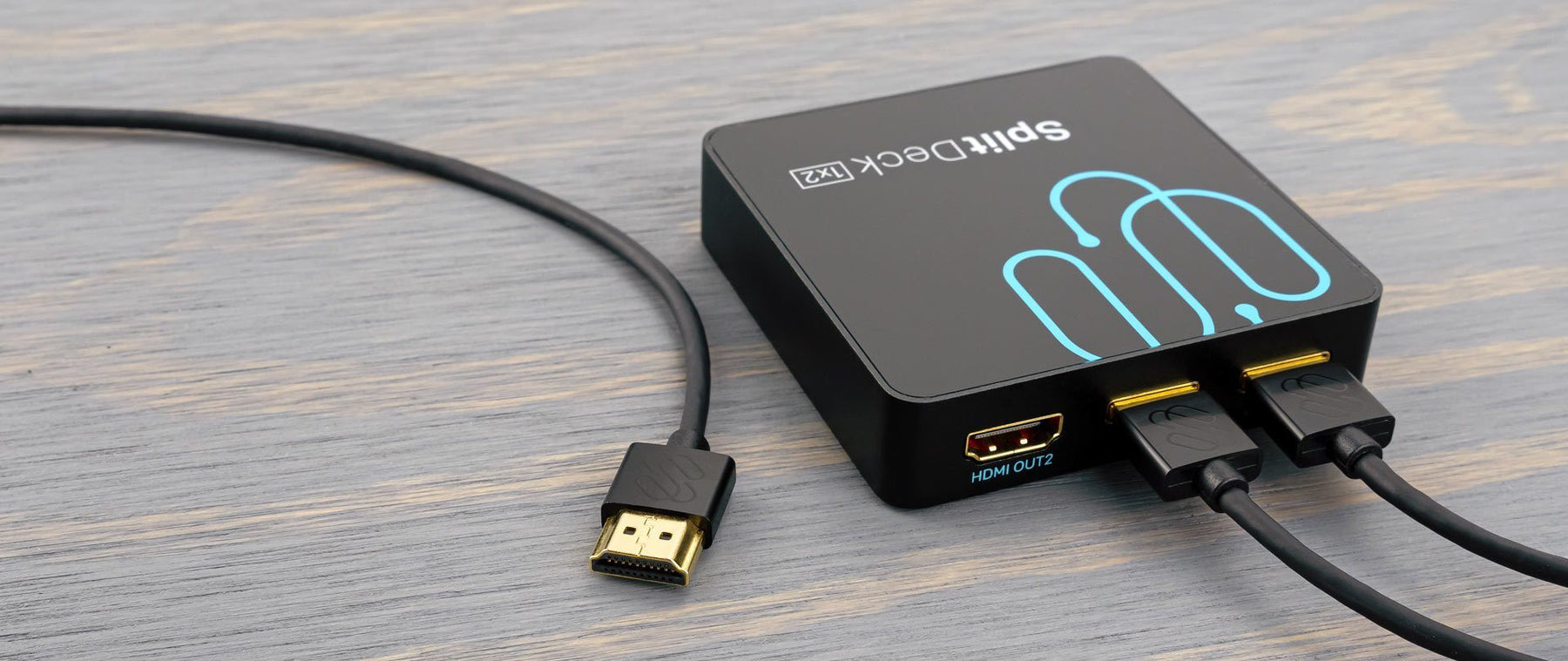
The Top 5 Differences Between an HDMI Splitter and HDMI Switch

One of the issues with having all of the latest HDMI-capable devices is that your television, computer, or laptop may not have enough HDMI ports to support them. You could exchange the cables each time you want to use your Xbox or PlayStation.
There is another option. You could connect your multiple devices using an HDMI splitter or HDMI switch. But which one will you need? Before you go shopping, learn about these HDMI products and how they can optimize your home theater experience.
What is the Difference Between an HDMI Splitter and HDMI Switch?
An HDMI splitter is a simple accessory and is the best-selling option for people intending to use a single-output device to send a signal to a multiple-display device. You commonly use a splitter when multiple displays are necessary, such as dual monitors for your computer or laptop.
An HDMI switch is an electronic accessory that allows you to connect multiple HDMI-capable devices at the same time to one output device. They come with numerous ports for input and output and share data with up to five HDMI sources.
The Top 5 Differences in a Splitter vs Switch
Knowing what each of these HDMI cable connector components is and how they function is the first step in appreciating their differences. If you’re not sure which one you need for your home entertainment center, take a moment to examine the top five differences in an HDMI splitter versus a switch.
1. Signal Source
An HDMI splitter takes from one source and sends the single signal to the multiple-displays simultaneously. The switch sends and receives numerous audio/visual (AV) signals and transmits them from one source to the others.
2. Manual Control
In splitting the signal, the HDMI splitter will distribute the signals evenly across the two outputs. It does this automatically. A switch allows you to manually switch between different HDMI inputs.
3. Network Capabilities
With a splitter, you have two connection options. You can use a cable splitter, which is best for most applications. The other option is to use a network cable splitter. You will want to use this type when you need to cover long distances. Networking in this way is not an option with a switch.
4. Simplicity Factor
An HDMI splitter is a simple, plug-and-go technology that requires no additional setup beyond the initial plug-in. They require very little knowledge of how they work. A switch can be a bit more advanced. If you have multiple devices that need to interface with one another, an HDMI switch is the best choice.
5. Size Options
An HDMI splitter comes with only a minimal design option of one input with two outputs and is the most common version of this AV accessory. The HDMI switch comes with a variety of size options, such as three inputs or five inputs.
How to Integrate HDMI Audio/Video into Your Home Theater
The good news about setting up any home theater system is that as technology advances throughout the AV industry, so do the enhancements to your electronics. Manufacturers realize that HDMI-capable devices require additional ports. Often, this does not solve the problem completely. Using a splitter or a switch allows for better sound and picture quality when connecting using HDMI technology.
Here is how to set up an HDMI home theater:
- Select the correct cables
- Locate all HDMI connections
- Connect the HDMI output
- Connect multiple devices to HDMI inputs
- Connect the AV receiver
- Plug all devices into power outlets
A pro tip for anyone setting up their home entertainment center, or even a home office, you should label all cables plugged into your HDMI splitter or switch. This way, you know the exact setup of your AV system.
How to Get the Top HDMI Splitters and HDMI Switches
In most setups, the differences between an HDMI splitter and HDMI switch depend on the number of devices you want to connect, the amount of data transferring between interfaces. The best way to ensure you get the exact part you need is to talk to an industry expert who can walk you through the process of selecting the right HDMI accessory.
Since 2003, Sewell Direct has been providing the best in HDMI and audio/video products. Customer service is their top priority. Regardless of the size of your order or your technical capabilities, you will always buy with confidence. And with same-day shipping, you will receive your parts fast.
If, for some reason, you are not satisfied with your purchase, contact their friendly technical support to help you with installation or to get the product return initiated.
At Sewell Direct, we have the HDMI cables, splitters, and switches you need for your HDMI-capable devices. Visit our complete products guide to learn how we can get your home theater connected.
